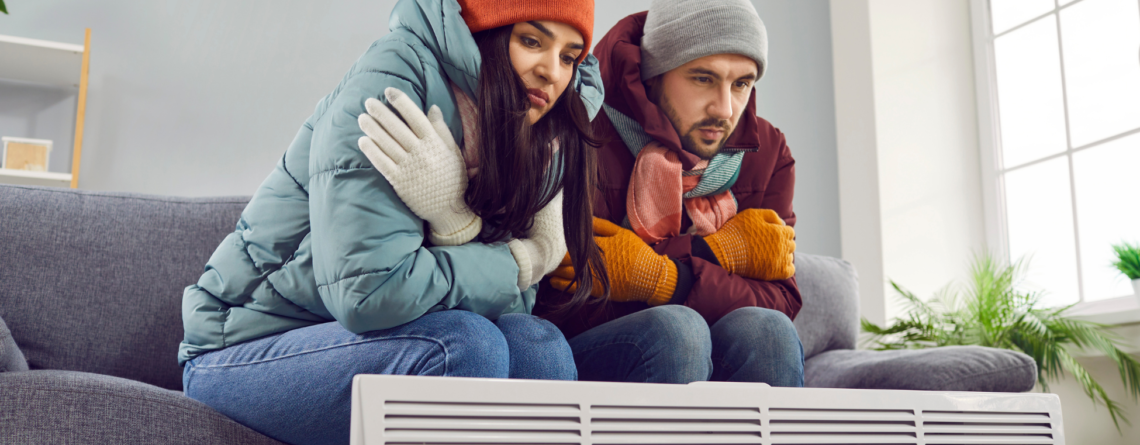What To Do When Your Heater Goes Out Midwinter
You may have noticed that heaters, and electricity in general, have a way of going out when Mother Nature brings her coldest winter storm of the season. While we don’t face the same freezing extremes as people in Wisconsin or Minnesota, it’s still a bummer to be cold. If you have a low tolerance for whining and you live with teenagers, a broken heater in winter can be truly unbearable.
So how can you warm up with a broken heater? After you schedule a service call, the first thing to do is to locate any places in your home where outside air can get in. Cracked windows are common culprits, as are poorly caulked or weather-stripped doors. Ideally, you’ll want to replace broken or cracked windows, but since that can get expensive and takes time, re-caulking and/or putting packing tape over cracks and holes will help keep warm air in and cold air (and moisture) out.
Keep curtains and other window coverings closed until sunlight hits the windows directly. During the day, concentrate heat in the main living quarters by closing doors to unused rooms such as bedrooms and bathrooms. To make this even more useful, you can get under-door draft stoppers at CVS. These sleeves fit under the door with Styrofoam cylinders on either side, effectively preventing drafts under the door.
Once you’ve done all you can to prevent warm air from escaping, you can do a few things to increase the indoor temperature. If your heater is broken, but you have electricity, you have more options, of course. You can bring in space heaters and allow the heat from the stove and/or oven to warm things up. Incandescent light bulbs, while not a great source of heat, do produce some. (You’ll know this if you’ve ever burned your fingers trying to change a bulb after it’s been on for a while.)
If your electricity is out, options are more limited. If you have a fireplace or wood-burning stove, you’re in great shape. If not, candles help a little, as do kerosene or propane lamps from your old camping days. Be careful with these, especially if you have small children in the home. Never leave them unattended. If you use a kerosene lamp or heater, be sure to crack a window to re-oxygenate the room. If you have ceiling fans, you can reverse their direction (or install the blades upside down) to push warm air down toward you. You’ll also feel warmer if you put rugs over hardwood or tile floors.
Although healthy adults can throw on warm pants and a ski jacket and do just fine without a functioning heater, be aware that infants and old folks have a harder time regulating their temperature. Be sure to keep them extra bundled.
While Murphy’s Law gets all of us eventually, you can sometimes prevent your heater from going out at the most inopportune time with some preventive maintenance. Call the furnace inspector in fall when you’re the only one calling, rather than in December when everyone in Ukiah wants an inspection. As a side note: be sure to ask for a carbon monoxide inspection at the same time. We recently had a property management client call to let us know their carbon monoxide alarm went off. When we called to have the heater inspected, the company did not check for carbon monoxide, only to be sure the heater appeared to be heating. I was livid.
Preparing for contingencies is rarely the most pressing thing on anyone’s mind, but you’ll thank yourself later if you find yourself in a pinch. For tips on winterizing your home, visit richardselzer.com/2017/10/23/winterizing-your-home. For more on emergency preparedness, visit richardselzer.com/2017/10/30/emergency-preparedness-mendocino-county.
If you have questions about real estate or property management, please contact me at rselzer@selzerrealty.com or visit www.realtyworldselzer.com. If I use your suggestion in a column, I’ll send you a $5.00 gift card to Schat’s Bakery. If you’d like to read previous articles, visit my blog at www.richardselzer.com. Dick Selzer is a real estate broker who has been in the business for more than 40 years.






